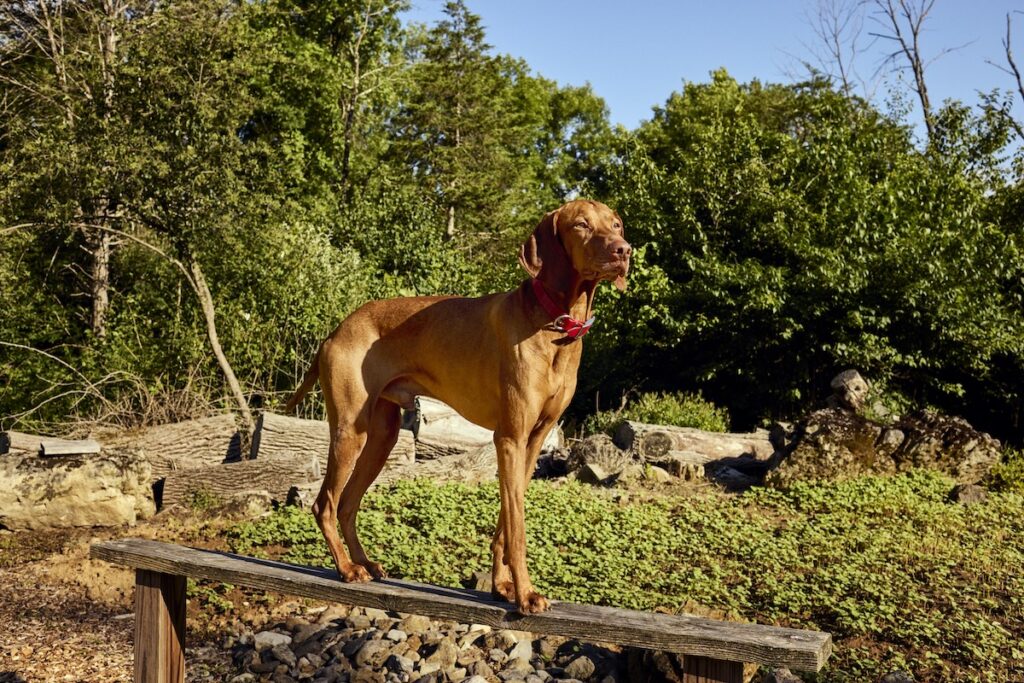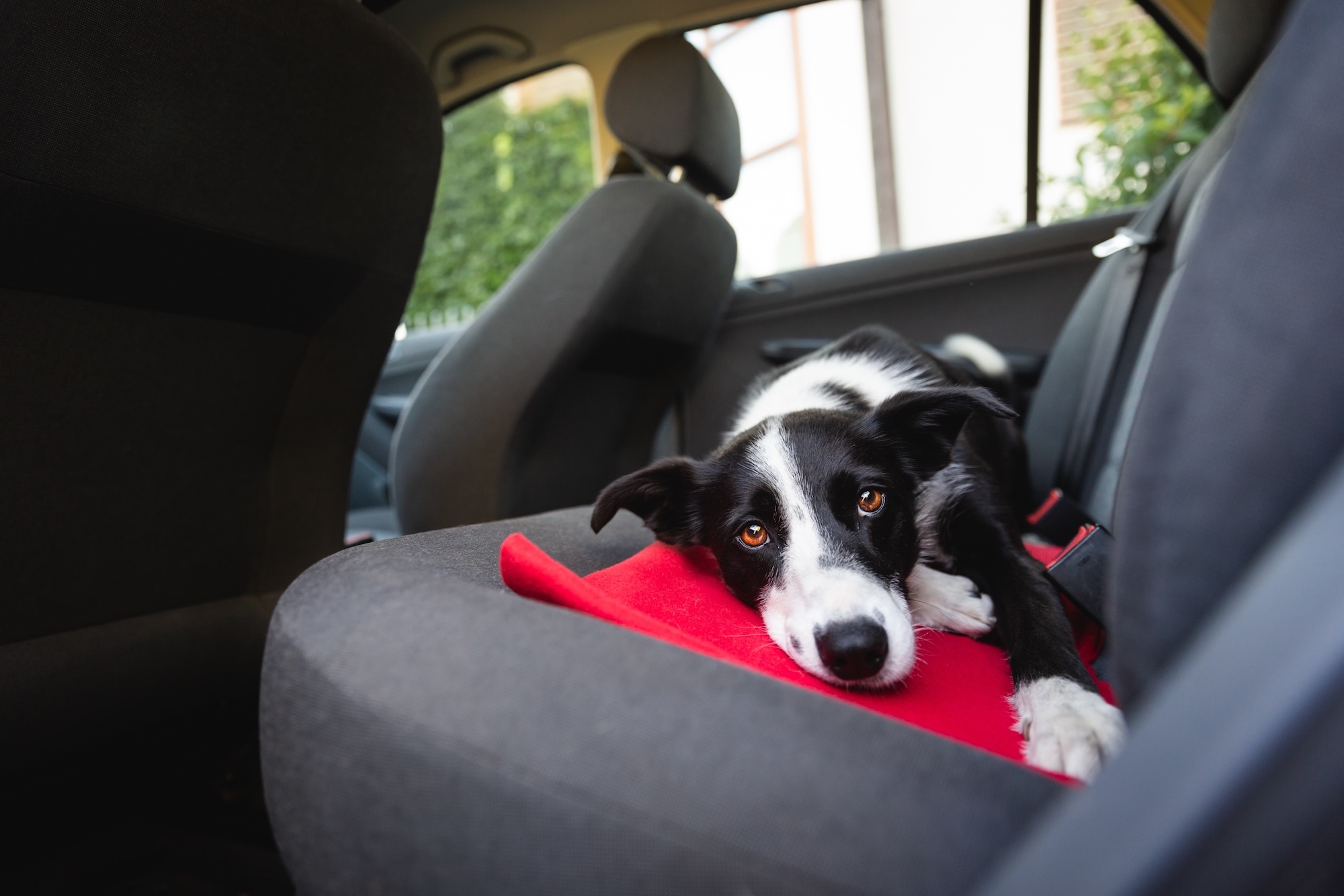This article was updated in April of 2025.
Maintaining a healthy weight and lean body condition are among the most important, accessible things you can do for your dog’s long-term well-being. And managing weight is all about knowing exactly how much food your dog should eat each day. Here’s why precise portions are so important, and how to figure out how much to feed.
A big problem (that’s easy to overlook)
The majority of dogs in the U.S.— 59%—are overweight or obese. For a dog, being overweight comes with significant health consequences: It’s linked to ailments including arthritis, chronic kidney disease, bladder/urinary tract disease, liver disease, diabetes, heart failure, high blood pressure, and cancer.
And here’s where your dog’s weight can sneak up on you as a significant health issue: it doesn’t take many extra pounds to start seeing negative effects. As Dr. Ernie Ward— DVM, CVFT, and founder of the Association for Pet Obesity Prevention (APOP)—tells us, there’s often a gap between what pet owners think is “normal” and what a healthy weight actually is. “In human terms, we think we just need to drop five pounds,” says Ward. “Well, the amount of physiological impact of a few pounds is much, much greater and more concentrated in pets than in people. We think, ‘a few pounds on my Lab; what could the consequence of that be?’ But the consequences [of the extra weight] are that Lab’s hips are deteriorating, it’s causing damage to the kidneys, it’s probably causing high blood pressure which is causing a constellation of problems, and it’s increasing cancer risk.”
Studies have shown that being overweight was associated with lifespan reduction of two-and-a-half years. And overweight dogs may benefit from even slight weight loss; one study showed that osteoarthritis can improve with a weight loss of just 6%.
Why it’s key to get daily calories right
Dr. Ward and other experts agree—weight loss begins and ends at the food bowl for dogs and cats. Exercise is important, but even an active dog will gain weight if consistently overfed.
Given the outsized importance of diet, and the slim margins between an ideal weight and being overweight, portion accuracy is critical. To get accurate, you need to know how many calories your dog really needs each day. Like many experts, Ward cautions against using the “cup” or “scoop” guidelines on most commercial dry dog food packages to determine how much you’re feeding. These one-size-fits-all parameters are far too broad to accommodate every dog’s needs. For example, Ward says, spaying or neutering a dog may reduce their energy requirement by 20–30%. “So already, if you’re feeding according to guidelines you’re overfeeding a pet who is spayed or neutered,” he says. “I see so many pet owners say ‘I’m feeding exactly what they say on the bag,’ and it’s like ‘no, that’s too much.’”
Talk to your veterinarian about your dog’s body condition, their lifestyle, and how much food they should eat each day. And, if you want to make portioning easier, consider a pre-portioned fresh-food plan.

How The Farmer’s Dog takes the guesswork out of precise portions
A pre-portioned fresh-food plan like those offered by The Farmer’s Dog makes it easy to feed your dog the right number of calories for their specific requirements, and to adjust daily calories based on changing weight-management needs.
When you sign up for a plan, we ask for several pieces of information about your pet. We use the information you provide to calculate a baseline recommendation for your dog’s daily calorie requirements. Since every dog, and metabolism, is unique, we use this as a starting point, and are always on hand to help with any necessary adjustments.
Here are the elements that go into our calculations, and how they help us determine your dog’s portion:
Your dog’s age: Age can affect how much food your dog needs. Puppies and younger dogs may require more calories than adult dogs, as they use some of that energy just in the process of growing! And senior dogs’ nutritional needs often change over the years, so they—maybe even more than other adult dogs—should be continually assessed, and their diet changed, as needed to support their bodies through the aging process.
Whether or not your dog is neutered/spayed: This often gets overlooked—but, when a dog is spayed or neutered, it can reduce their energy requirement by up to 30%.
Your dog’s weight: Weight provides a starting point for determining how many calories we recommend. From there, we’ll use the other information you provide—including their body condition—to get even more precise about our portions.
Your dog’s body type/condition: Body condition is a crucial measurement of your dog’s health. While we already know your dog’s weight, getting a picture of their condition is important—because every dog is different, and has different dietary needs. One 20-pound dog might be rail thin, and another might be chunky; this is vital information when it comes to determining portion sizes. When you visit your veterinarian, they will assess your dog’s body condition by sight and touch using something called a Body Condition Score. Using a 1–9-point scale that ranges from extremely underweight/emaciated (1) to obese (9), they will determine whether your dog needs to lose, maintain, or gain weight. A score of 4 or 5 is typically considered ideal.
It’s important, and easy, for you to keep an eye on your dog’s body condition over time.
Read, and watch, more about the simple test you can use to track body condition here.
Your dog’s breed: Some dog breeds require more or less energy than others. Smaller breeds can have a higher metabolism than some bigger ones, and require slightly more calories per pound of body weight. Some breeds—including Labrador retrievers, Shetland sheepdogs, pugs, Basset hounds, dachshunds, Cavalier King Charles spaniels, and beagles—are more genetically predisposed to obesity. And high-energy breeds may benefit from more calories to fuel their activity levels.
So, if you know your dog’s breed, it helps provide that much more insight to help us determine the ideal plan.
Your dog’s activity level: All dogs need daily exercise that’s appropriate to their abilities. But, as with all things dog and human, one size does not fit all. Activity level can be a reflection of a dog’s breed, their personality, and your lifestyle. If your hobby is hiking, and your dog is always along for the adventure, they may need some extra fuel; if they’re a senior who’s happy to make it a few times around the block, it’s important to not let their weight creep up.
One thing to keep in mind is that, again, even a dog who’s getting a good amount of exercise will gain weight if they’re being consistently overfed. The biggest factor in weight management is what’s in the food bowl.
Your dog’s “extras” (treats and scraps): Treats may seem like they “don’t count,” but they can add up. Most experts (including us!) advise that treats should make up no more than 10% of your dog’s daily diet.
Sometimes it’s hard to figure out what 10% really looks like, and that’s another reason calorie-awareness is so important. It’s very easy to feed four or five of your dog’s favorite treats, or a few tablespoons of peanut butter, in the course of training (or just rewarding extreme cuteness). But if each treat is 25 calories, and you feed 4, that’s already 100 more calories on top of your dog’s complete and balanced food. Over time, these handfuls of treats can add a significant number of calories—and, eventually, extra weight.
Sign up with The Farmer’s Dog to build a precisely portioned plan for your unique dog.




